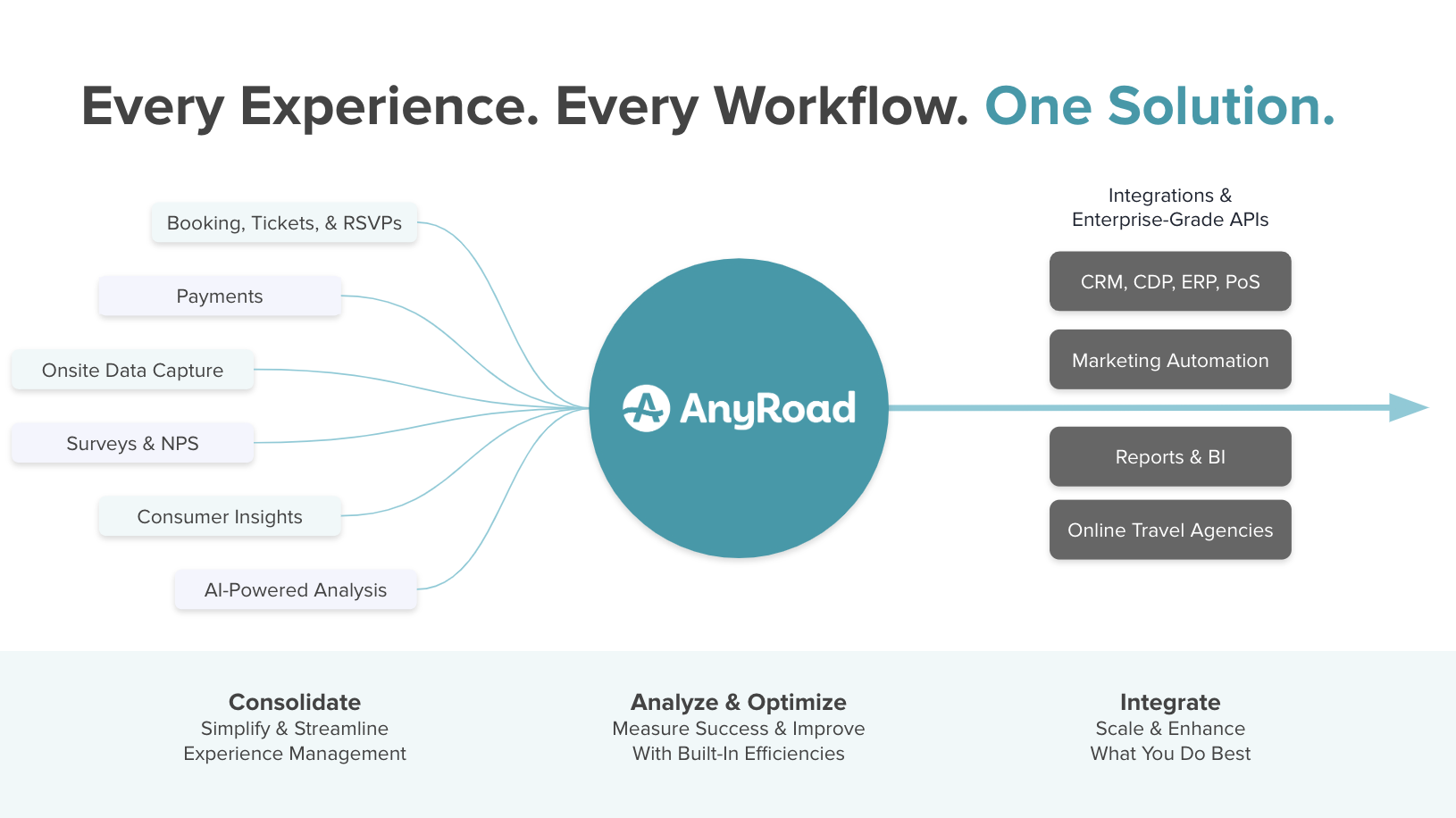Imagine offering guests a delicious platter of cheese to complement their tasting, or perhaps an insider tour around your brand home. These kinds of physical and experiential add-ons enhance branded experiences and drive loyalty on every interaction.
In the series, we share insights and advice from industry leaders who are offering successful branded experiences and are pioneers in experiential marketing.
With reopening accelerating, the AnyRoad team sought to understand how the Experience Economy will evolve in the coming months. Throughout June 2021, we took a deep dive into our data analyzing three million unique experiential records from over 400 customers' branded experiences in more than 90 countries (primarily US and UK).
One of the key highlights was that post-COVID consumers are 10-15% more likely to upgrade or personalize their experiences. For example, a brand that offers a distillery tour might lift sales by offering a limited edition bottle at checkout.
We're noticing an increased opportunity for add-ons and personalization, and here is why:
Reopening is accelerating.
As of May 31st, 2021, 75% of AnyRoad customers have reopened for in-person experiences. By the end of July, we expect 100% to have reopened.
Brands that are open today are getting more engagement, data, and insights. Furthermore, those that offer paid experiences and additional services (add-ons) are seeing meaningful revenue growth.
Now is the perfect time to leverage the pent-up consumer demand for in-person experiences and help your guests to enrich their interactions with your brand while generating additional engagement with your products.
Consumers are spending more as restrictions are lifted.
In May 2021, consumers were spending over 4.5 times more on experiences through a combination of larger group bookings, wider experience selection, more upsells, and offering add-ons.

For paid experiences, we're seeing an increase in guests' willingness to buy upgrades and add-ons. This indicates that consumers may have a pent-up demand and are hungry for premium experiences.
For example, if you offer a distillery tour, ensure you have upgrades available in the checkout process, such as a limited edition bottle. You'll likely see a lift in sales in the short term.
To maximize revenue from paid experiences, make sure to provide opportunities to upgrade and purchase add-ons.
Consumers are concerned about COVID safety.
Post-COVID, consumers are 10-15% more likely to upgrade or personalize their experiences.

Feedback and commentary about COVID safety peaked in March 2020 and subsided slowly afterward but has started to increase as reopening accelerates.
Including more experiential options that appeal to more consumers is a great stepping stone. For example, offering a private premium group experience for the more COVID-anxious consumer presents the opportunity to charge a premium for privacy.
Add-ons have a direct impact on your NPS.
We've seen a clear correlation between safety sentiment and NPS, with positive comments being linked to higher NPS scores while negative comments were reducing NPS by up to 10%.
In fact, both pre and post-experience Net Promoter Scores® typically trend higher for bookings that include add-ons — meaning guests who purchase add-ons have a more favorable perception of the brand, both before and after their experience with the brand.

Providing future buyers a complete image of what you are offering is half the success! Adding a detailed description for each add-on, as well as a clear photo, is an excellent way to engage your audiences and ensure they have a well-rounded understanding of what you are offering.
There is no limit to how many add-ons you can list on your experiences, and they can vary per event. Many brands offer unique options for seasonal events, such as Holiday-themed goodies or packages, anniversary specials, and limited-availability product releases (e.g. bottle engravings).
You can find more technical details about add-ons on our Experiential Add-ons help article.



.png)

%2012.57.51%E2%80%AFa.m..png)
